The A. Lange & Söhne Triple Split – or the Triple “Wow Effect”
If the Double Split was the über-Chronograph, what can we say about the A. Lange & Söhne Triple Split?
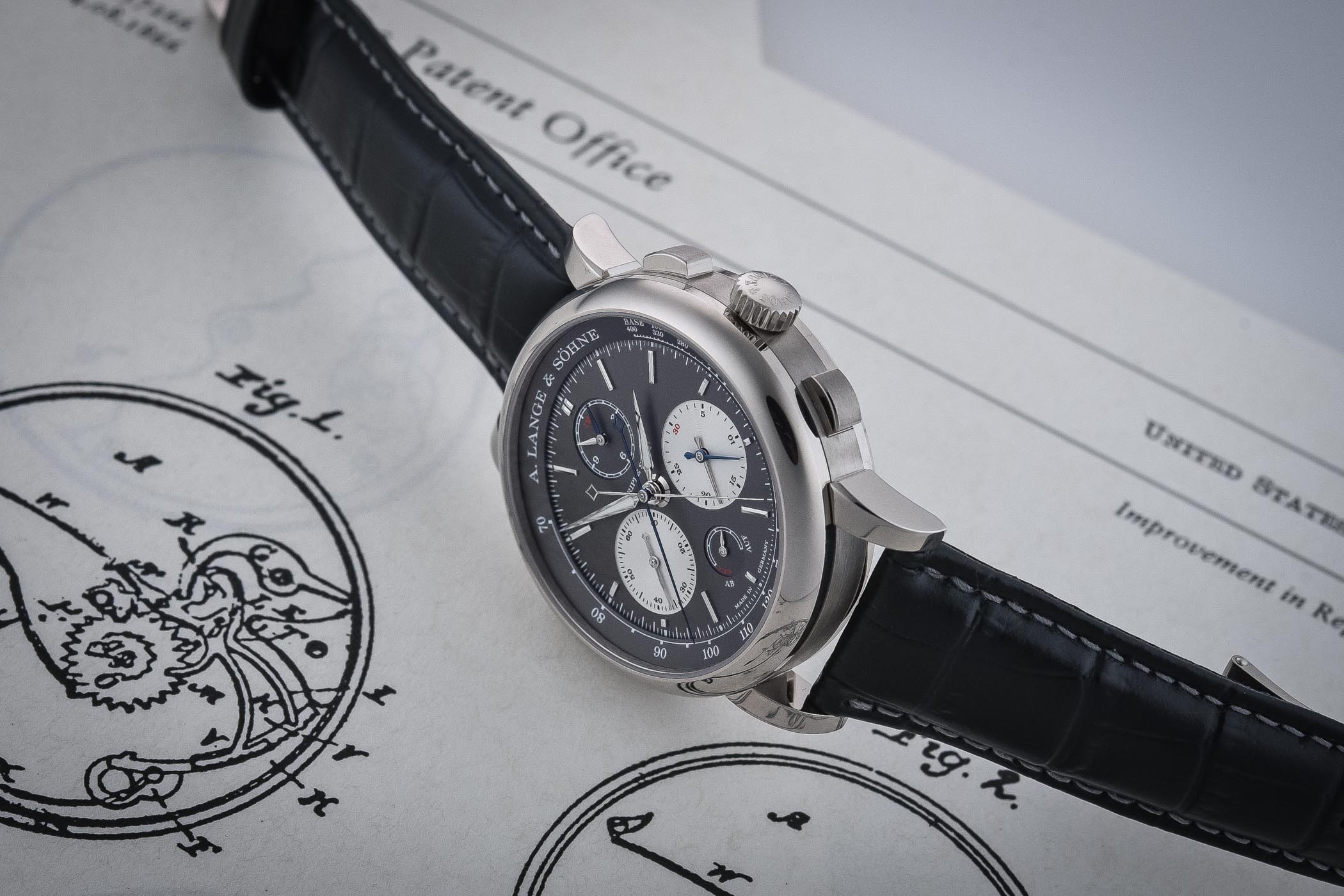
In the watchmaking world, there is the chronograph complication – in itself a complex type of movement that is hard to develop and to assemble. Then, there is the flyback chronograph, allowing for an instant reset-start of the timing session. And for years, right at the top of the food chain was the Split Seconds or rattrapante chronograph – the ultimate version of the stopwatch. That was the status quo until A. Lange & Söhne came on the market with a watch nicknamed by collectors the “Mighty Double Split” or the “Über-Chronograph“, a timepiece with split seconds and split minutes. This year, at the SIHH 2018, A. Lange & Söhne presented the Triple Split, the “mighter than mighty” version of its rattrapante chronograph. One watch to rule them all…
Introductory note…
The A. Lange & Söhne Triple Split is a pure demonstration of desirable inutility…
Having a watch of these characteristics in your hands or on your wrist, even if it’s just for a couple of minutes, makes it hard to keep your journalistic objectivity intact. So please excuse me if the following article gets lyrical and enthusiastic… That is the effect a watch like the A. Lange & Söhne Triple Split can have on a watch lover. But before that, I have to ask a simple question: Is the Triple Split useful? And the answer is: No! This watch has simply no rational purpose. The Double Split was already a demonstration of desirable inutility and the Triple Split follows the same path. Don’t get me wrong, though. I say so with all due respect and a lot of affection. This watch is in the same vein as a Lamborghini Aventador SV or a Bugatti Chiron. Impossible to use on the road yet oh-so-essential at the same time. The Lange Triple Split is a dream machine, and dreams aren’t made to be rational. That being said, let’s have a look at this piece of pure “watch eroticism”.
The Triple Split Complication
What is a split? What is a double split? And more importantly, what is a triple split? Or in short, why is the ALS Triple Split THE most complicated chronograph ever created?
Once upon a time, watchmakers created an instrument named the chronograph – or the stopwatch (with a lot of queries about who actually created it – Nicolas Rieussec or Louis Moinet). A chronograph is a watch for timing events. They were created in order to calculate the length of an event, from its beginning to its end. Whether they are now used to measure the cooking time of your pasta or the length of a meeting, their first goal was to time races. A chronograph is an instrument on which time can be started, stopped and reset. First created as stand-alone pieces, they would later find their way into wristwatches, alongside the indication of the time.
So what is a split-seconds chronograph, or rattrapante in French? With the advent of racing (horses, cars, dog racing…), users discovered that a chronograph was good to time an entire race or a single lap, but incapable of timing intermediate events such as laps. This is where the split seconds makes sense. Remember that most of the traditional complications were purpose-built (the minute repeater, for instance, was created in order to consult the time at night…) The split-seconds chronograph allows time to be split and can be used to time several laps of a race in a row, without losing track of the entire event.

While a chronograph is equipped with one seconds hand, a rattrapante has two. When activated, both hands move simultaneously. However, by pressing an extra-pusher, you can stop one of them, thus timing one part of the event, while the main seconds hand continues its path around the dial. By pressing the pusher again, the subsidiary seconds hand will catch up with the main hand – hence the name rattrapante from the French rattraper – to catch up. One issue though, this device only allows the timing of intermediate events of less than 60 seconds.
In 2004, A. Lange & Söhne came on the market with a stunning watch, both visually and mechanically, the Double Split. Not only did it feature the split function on the central seconds hand, but added a split to the 30-minute counter. In short, you were now able to time several laps in a row, even for elapsed times of up to 30 minutes. And if this is not enough, the Double Split also featured a flyback function, meaning that the chronograph could be stopped, reset and started again “on the fly”, by simply pressing the pusher at 4 o’clock once.
What about the Triple Split? As you have probably guessed, the new A. Lange & Söhne Triple Split features three rattrapante functions. In addition to being able to split the seconds and the minutes, it can now split the hours. In his introductory article, Frank Geelen explained: “Now you can also record events with a duration of no less than 12 hours. For instance, measuring the times of two F1 race cars competing, of two cyclists in a Tour de France leg, or two runners in a marathon.” And once again, there is a flyback function that involves all three pairs of hands. Maybe it’s not something you’ll use on a daily basis, but just like a Bugatti Chiron, it is a stunning example of mechanical prowess. Period!
The A. Lange & Söhne Triple Split
Leaving the technical part aside for a while, the A. Lange & Söhne Triple Split seems like a natural extension of the Double Split. Collectors won’t feel lost at first glance since this watch follows the same concept as its predecessor – however, a closer look reveals quite a few differences.
The Triple Split shares the same 43.2mm case as the Double Split, even if it is slightly thicker (we’re talking minimal differences here with just 0.3mm added). This translates into a thick, bulky and large watch on the wrist and a far cry from a subtle dress watch. This perception of grandeur is even reinforced by the shape of the case, with its combination of a thick convex bezel and robust lugs. No bad feelings here, just a simple observation. The Double was a large watch, the Triple is the same. Yet, this has never prevented collectors from loving them.
When it comes to colours, A. Lange & Söhne has chosen to give the Triple Split one of its signature styles, a relatively discreet and modern combination of a white gold case and grey dial with white sub-counters – which can also be found on the Datograph Perpetual. The solid silver dial is, as usual, galvanized and offers a rich metallic colour, typical of the Saxonian brand’s production. The contrast with the rhodium-plated or blued hands is very good – which is important here since there are no fewer than 10 hands on the dial of the Triple Split!
As for the dial, the main difference with the Double Split is the addition of a 12-hour counter, while the AB/AUF power reserve indicator is now placed at 6 o’clock – instead of at its 12 o’clock position on the Double Split. The main hands match the case material and all the rattrapante hands are made from blued steel. The large inner flange keeps its tachymeter scale. Applied facetted hour markers in rhodium-plated gold complete this dial. Overall, no dramatic changes in terms of style and design.
The Triple “Wow Effect” of the Triple Split… The movement
There is a clear consensus amongst watch lovers and industry insiders that chronograph movements manufactured by A. Lange & Söhne are amongst the best in the world, both mechanically and visually. The Datograph was a reference, so is the 1815 and the Double Split was the final uppercut. No surprises then with the Triple Split, it is simply astonishing. As a joke, I wanted to highlight the “triple wow effect” as a reference to the name of the watch, but actually, there’s a certain reality here.
Wow effect, stage 1 – The first glance of this movement when you turn the watch and discover the view through the case back is like a slap across the face as you try and take in the absolute debauchery of parts, all arranged with an incredible depth and an infinite succession of recesses and reliefs. The movement of the Triple Split is richer than anything you’ve probably ever seen before. In fact, you hardly understand at first what is happening in this small area, barely larger than a coin.
Wow effect, stage 2 – Sit down, relax and breathe. After the initial surprise comes a moment for contemplation and understanding. How is it humanly possible to have so many gears, levers, wheels and screws packed in one single movement? The calibre of the A. Lange & Söhne Triple Split is probably one of the most exuberant movements ever made. Nothing is hidden, no large bridges have been added to cover the moving parts… The entire chronograph mechanism is exposed. There is so much going on that the regulating organ is barely visible. With so few bridges on top, it even makes you wonder how the parts are held in place… Watchmakers have stacked so many parts, created such a complex view, and yet, everything feels well organised. At certain angles, this movement looks like a micro-city, with skyscrapers and avenues. It really is a stunning movement.
Wow effect, stage 3 – Now it’s time to observe the decoration under a loupe. In this field, A. Lange & Söhne never disappoints. Whether we look at the entry-level Saxonia Thin or the Tourbograph Perpetual Pour le Merite, all watches are finished and decorated with the same loving attention to detail. The difference here comes from the complexity of the parts and the number of parts – and we’re talking 567 parts. All of them, without a single exception, are decorated by hand and finished with extreme care. Beveled bridges, polished and blued screws, levers with anglages on their sides, brushed surfaces on all steel parts, sharp interior and exterior angles. The most impressive thing is that Lange never takes shortcuts to make watchmakers’ lives easier. Take a look, for instance, at the chronograph levers. They could be shaped in a much simpler way. Yet, their curved and complex shapes make them even more appealing, requiring them to be finished by hand. In short, the decoration of the Triple Split is flawless.
Looking at the movement from a technical perspective, you could imagine finding the exact same base as the Double Split… But no. If the chronograph mechanism on top looks familiar, it has to be noted that the movement doesn’t have the same power reserve. Today it boasts 55 hours of energy, versus only 38 hours for the Double Split. Also, the addition of a third rattrapante function doesn’t mean the incorporation of a few additional parts. The movement comprises 567 parts while the Double Split only has 465 parts. It is truly complicated.
Conclusion
How can one fail to be impressed by the A. Lange & Sohne Triple Split? The Double Split was already one of the most remarkable chronographs available on the market. The Triple Split closes the circle.
In all fairness, the Triple Split remains quite close to its predecessor, which on the other hand will not reduce the ‘wow factor’. It is truly a lesson in horology, whatever angle you choose – visual, technical, decoration… It is a true statement piece, which has no other purpose than to make us dream and to create desire. Is it a necessary watch? No, but it is an essential piece of watchmaking art. Only 100 collectors will have the right to wear this watch and surprisingly, its price of EUR 139,000 feels almost acceptable (the Double Split in Pink gold is priced at EUR 117,600). It certainly is an insane amount, yet consider the competition (if ever there is a competitor for this watch) and you’ll see that it is rather well positioned.
More details on www.alange-soehne.com.

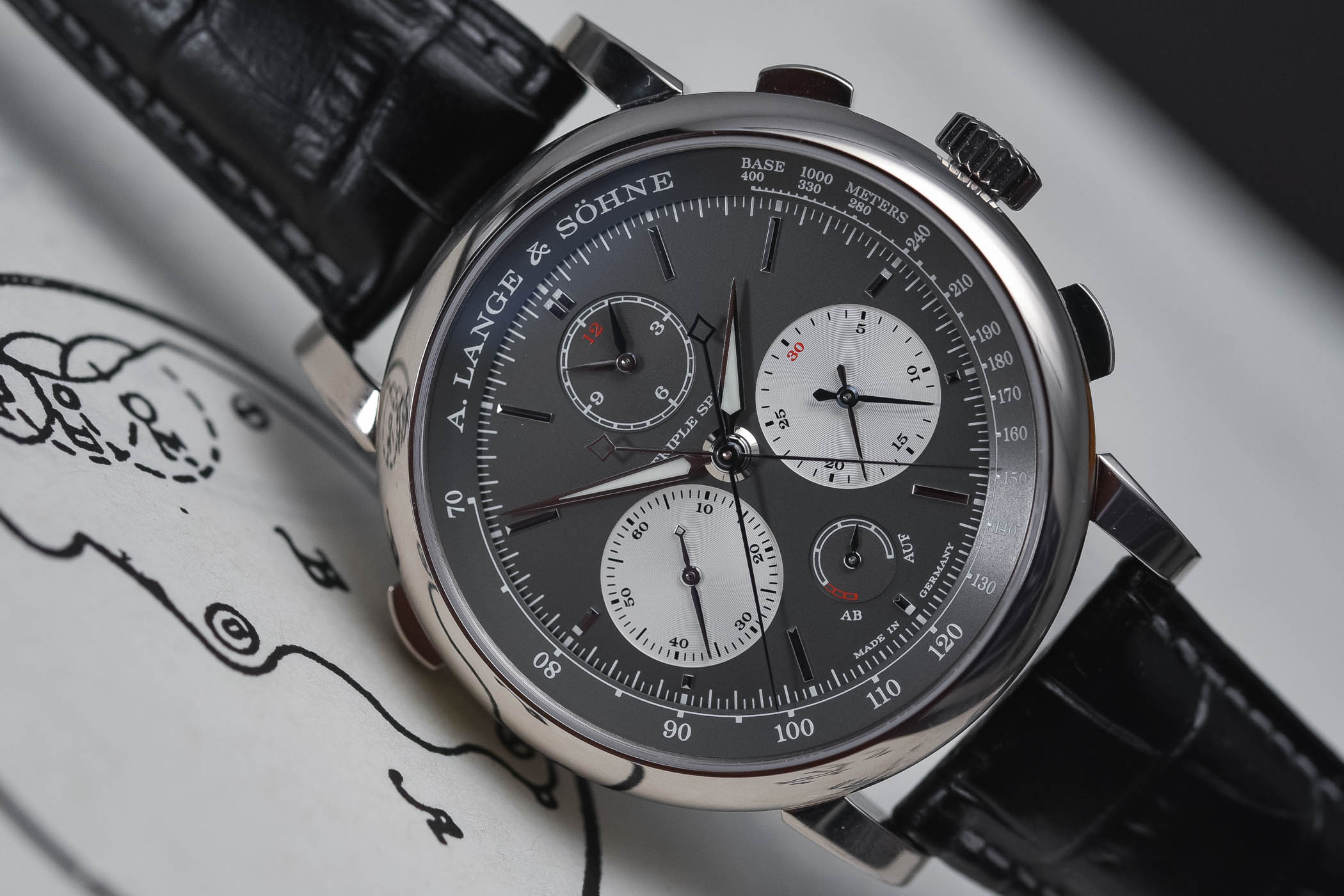
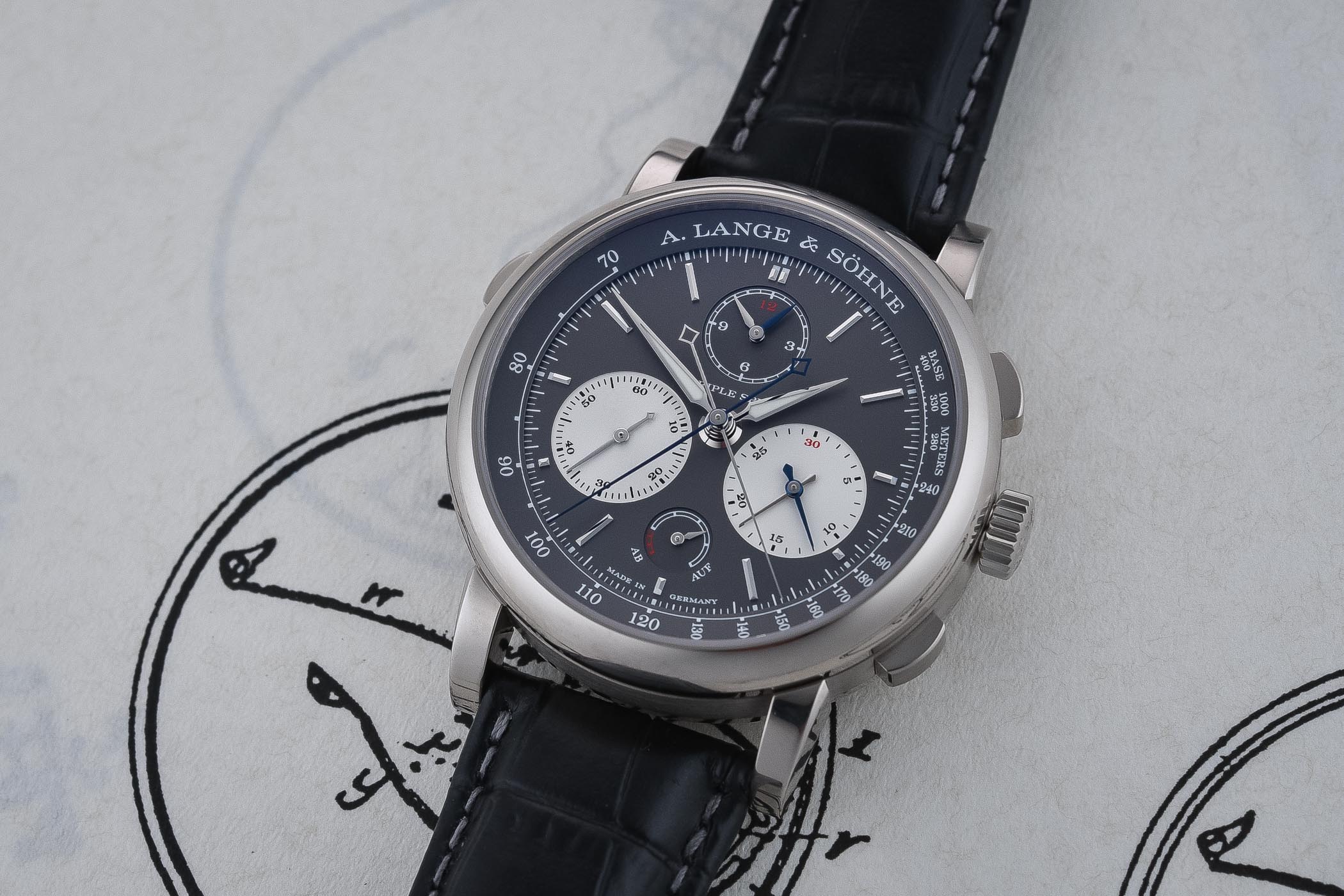
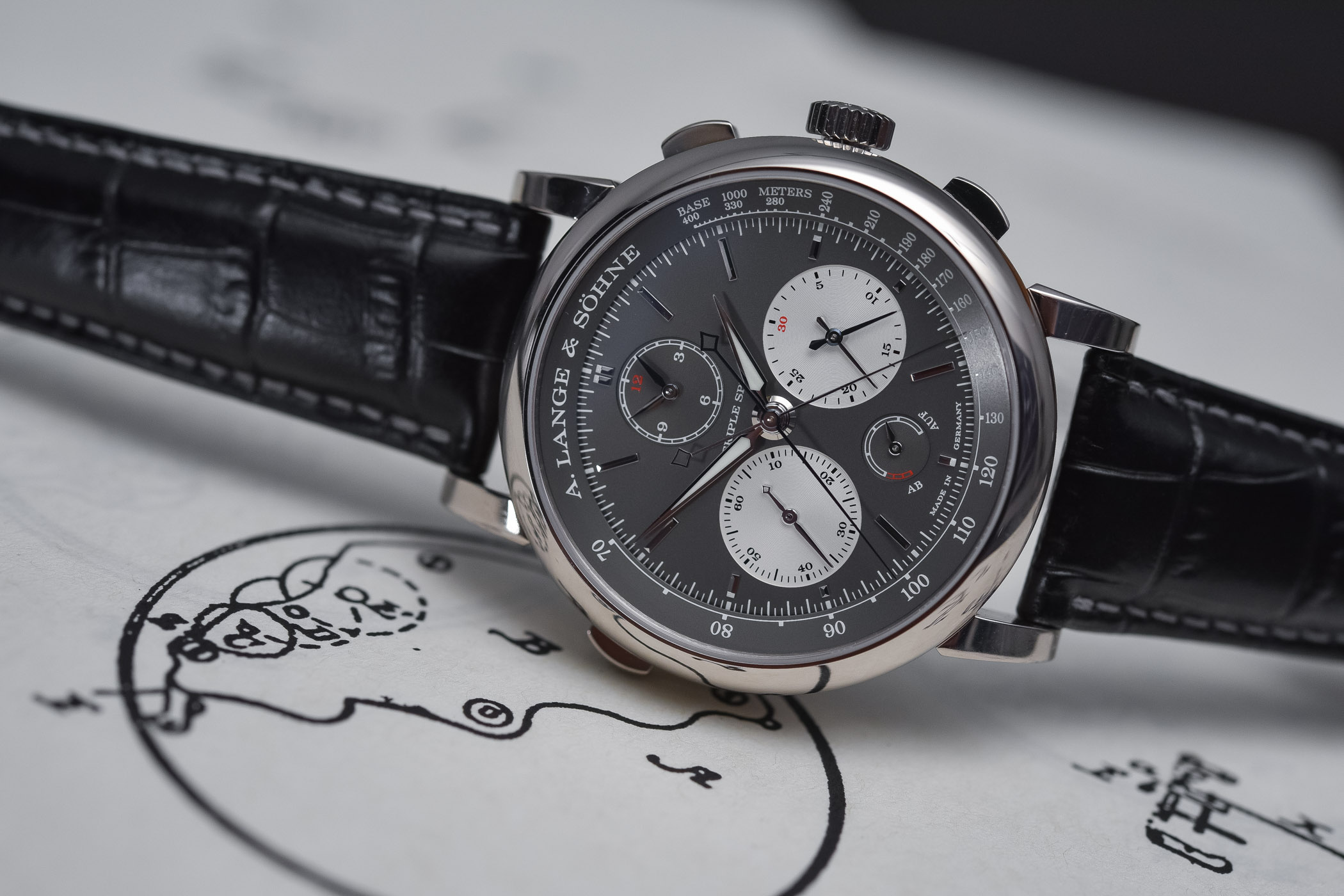
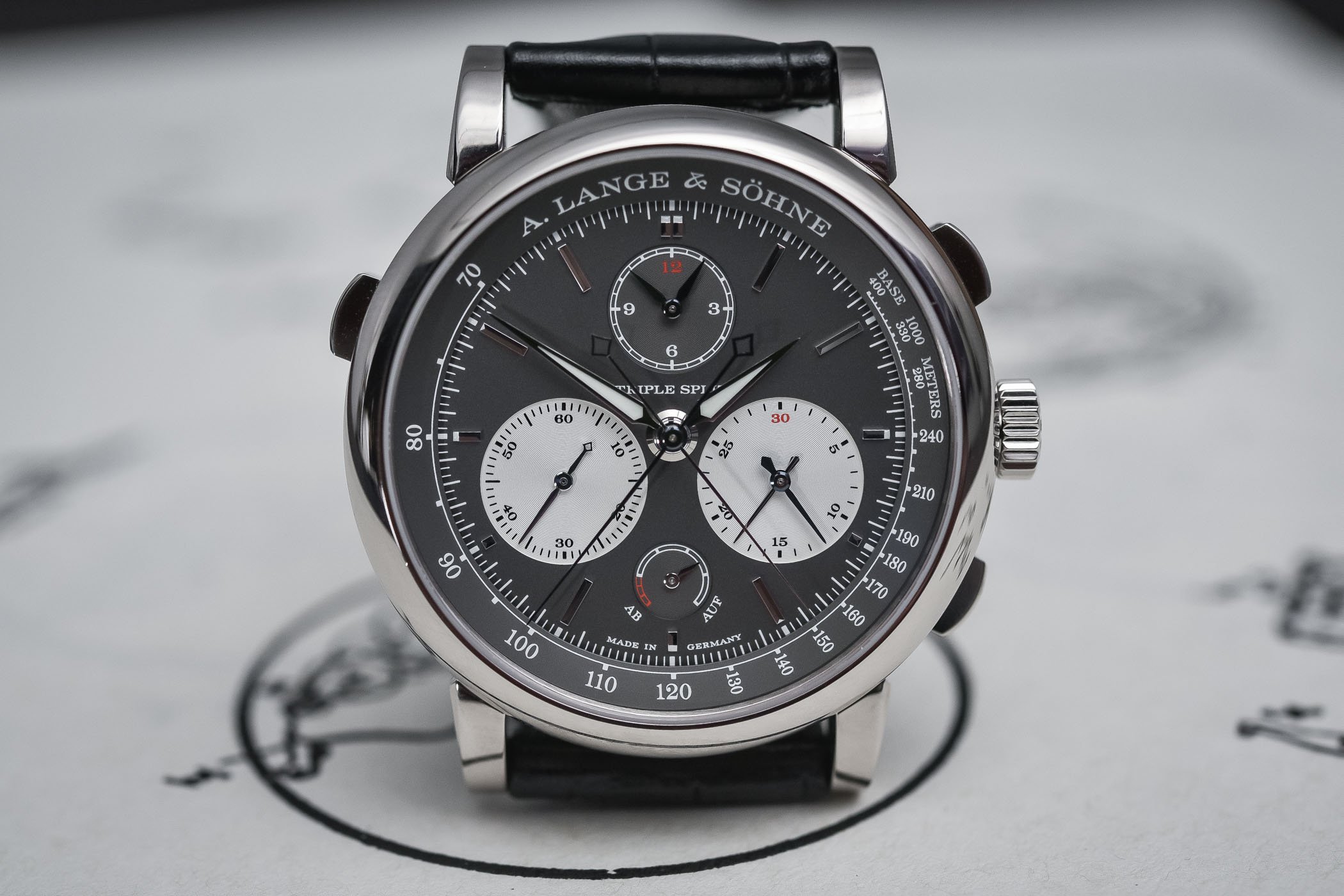
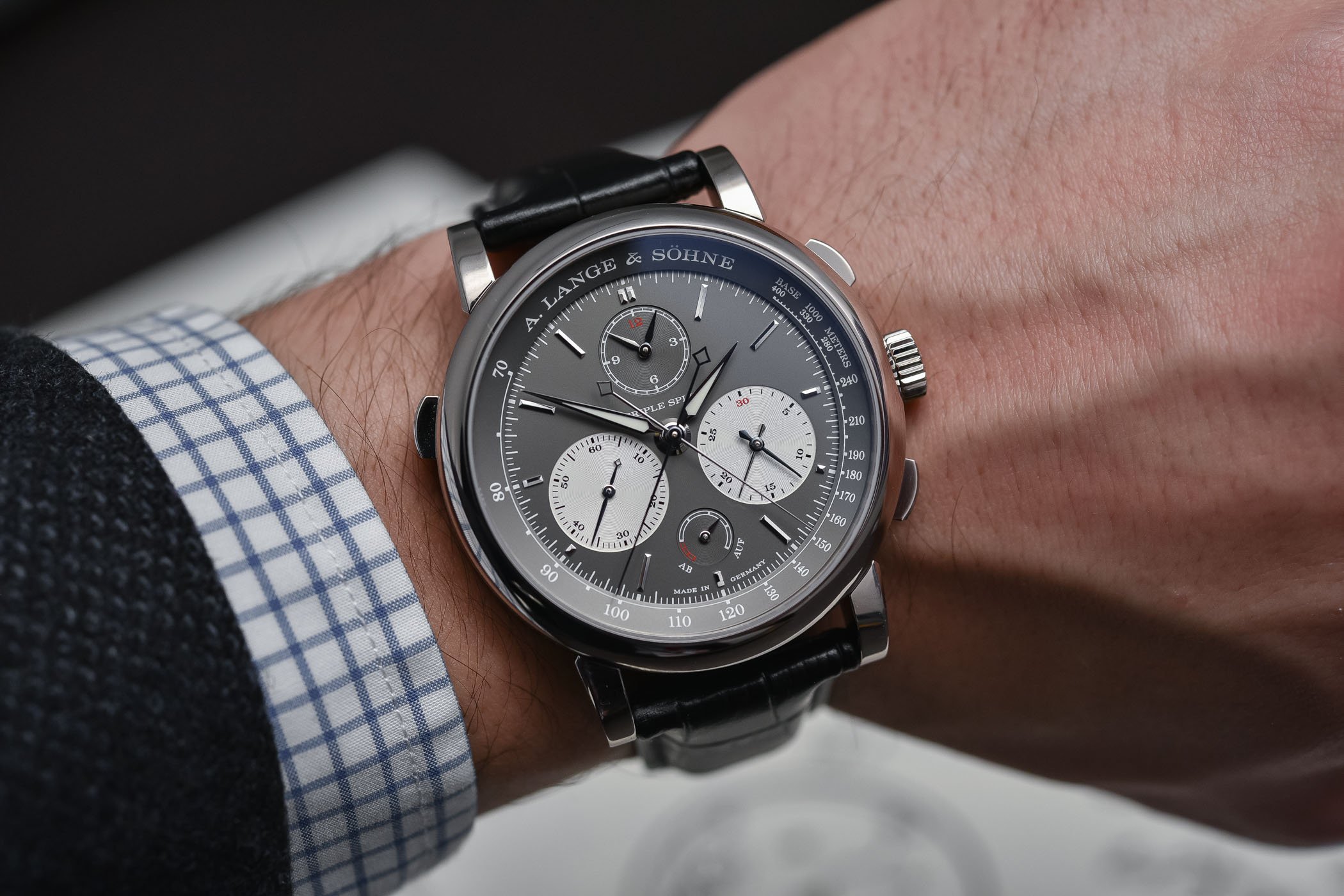
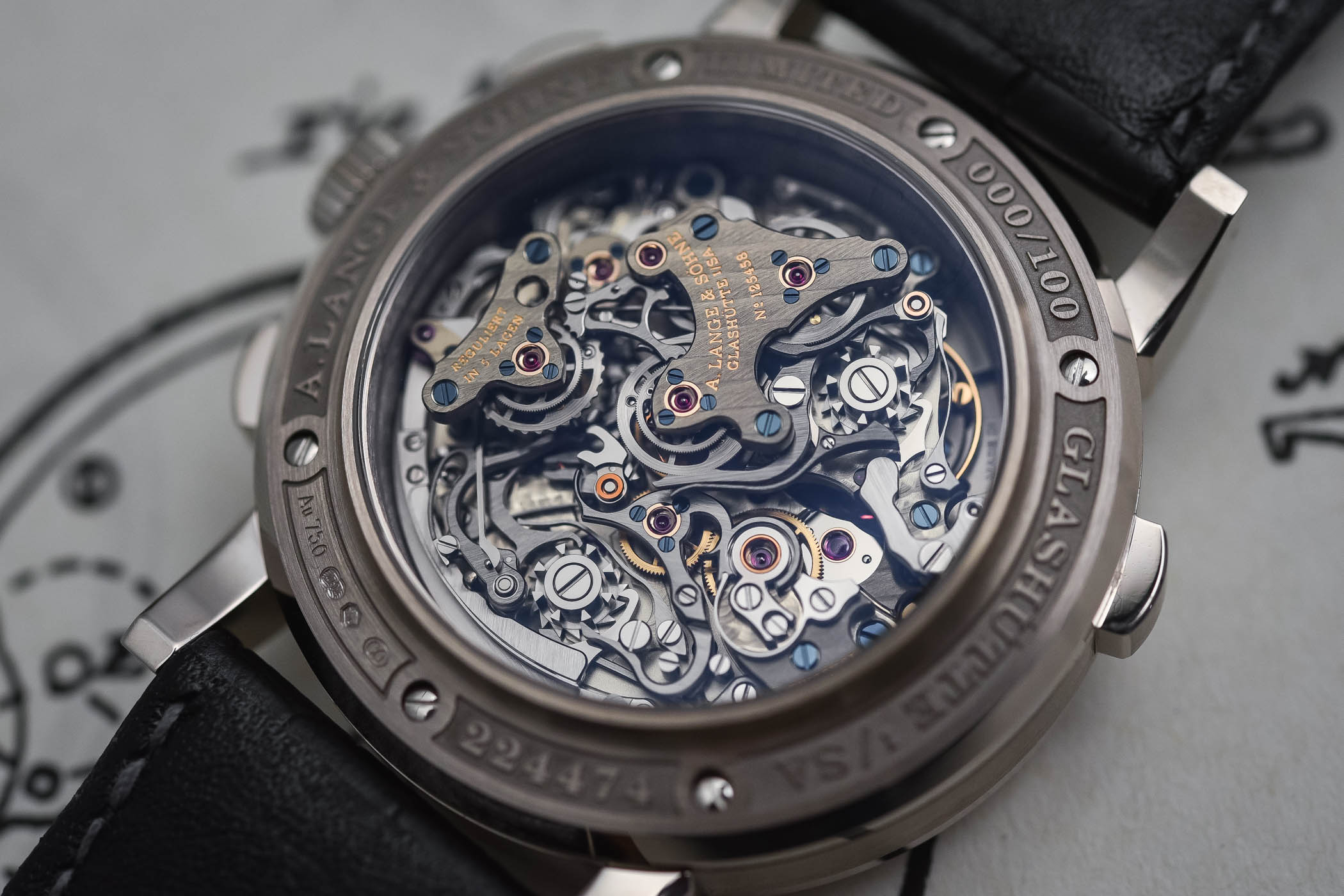
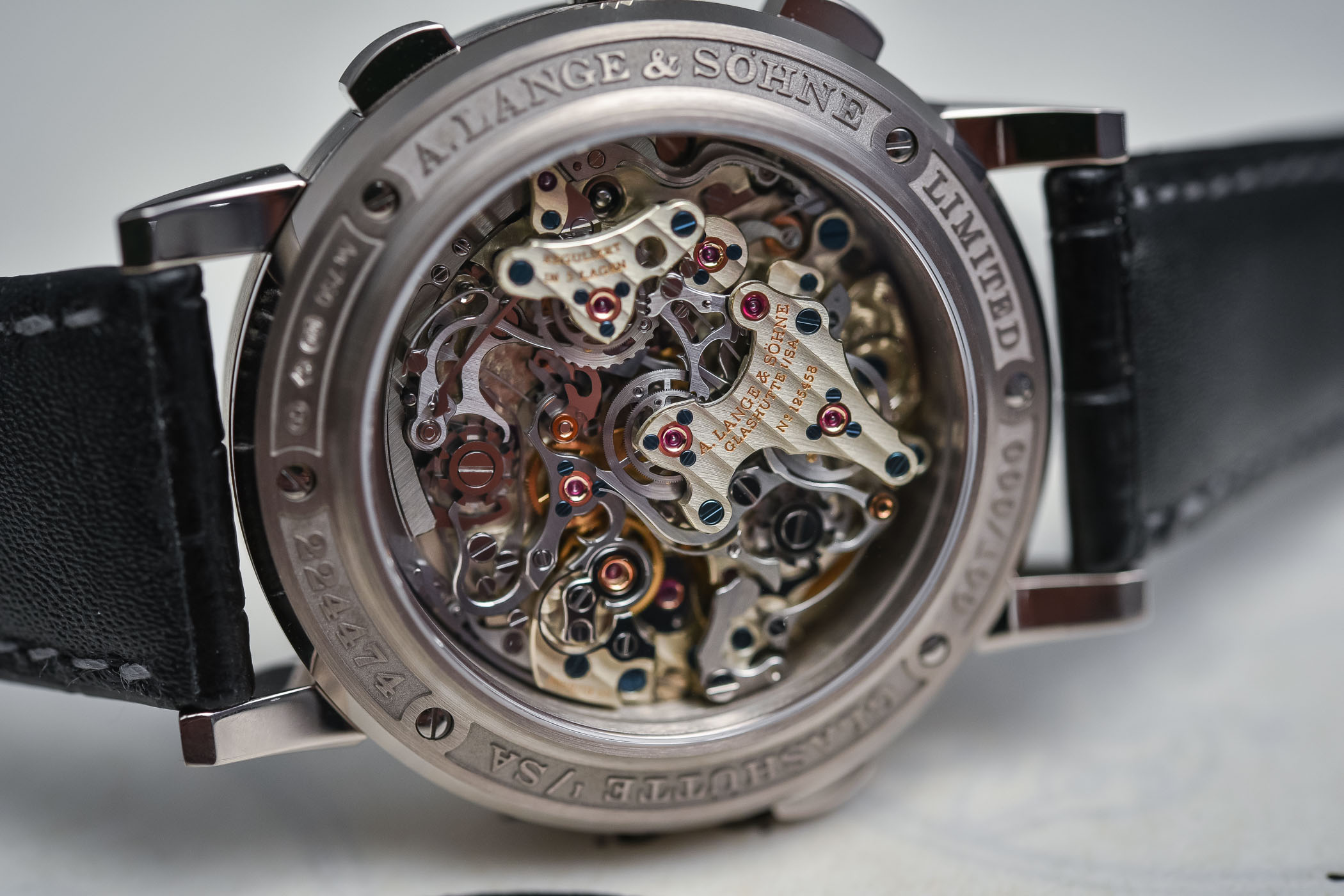
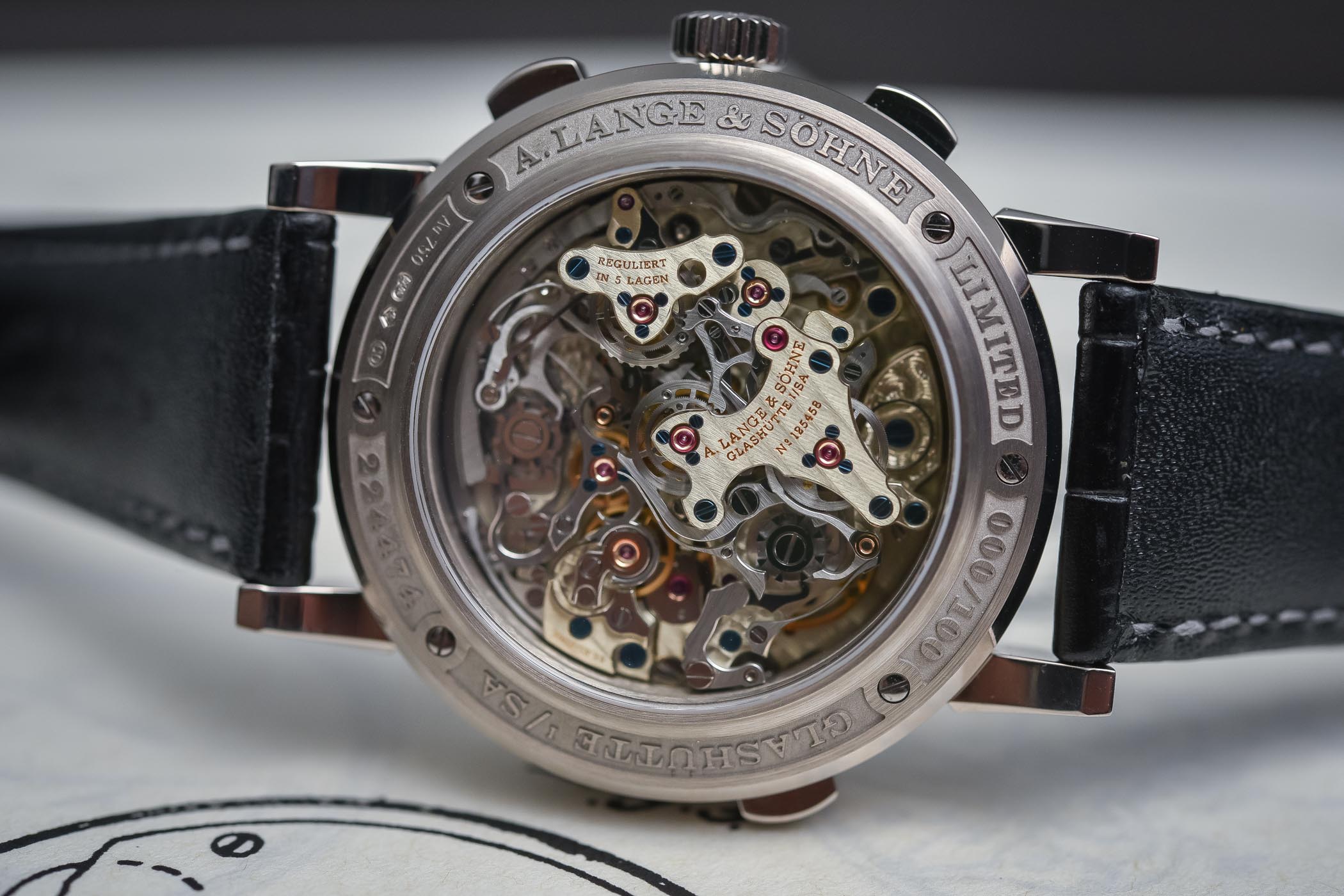
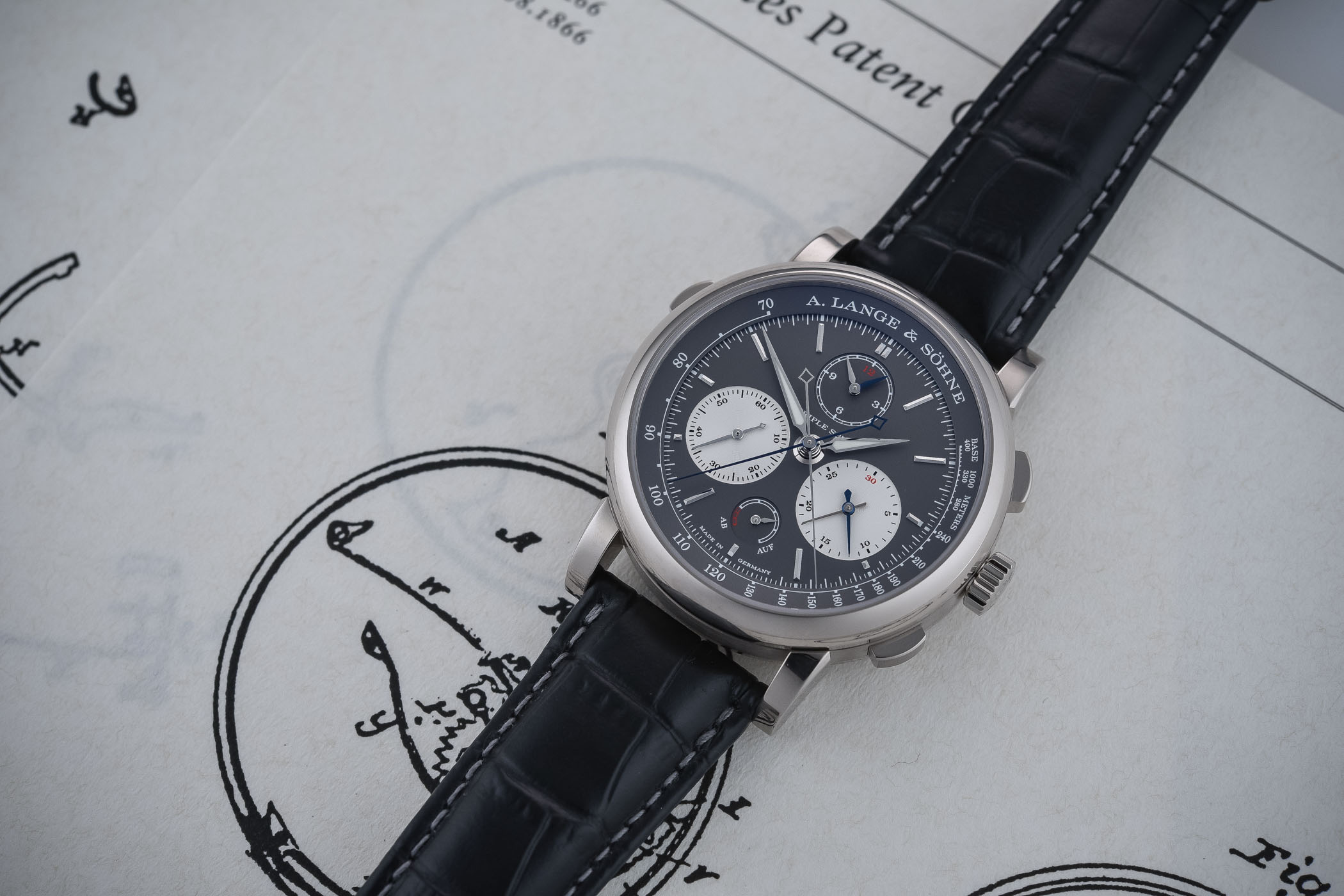



5 responses
Great review. shared it at my forum as well as facebook and twitter. I like to read a good review as opposed to the run of the mill sponsored ones.
Why is this not tagged under “Grande Complication”?
@Daniel – A ‘grande complication’ is something very precisely defined. If we look at this type of watches in a strict way, a Grande Complication is a watch that features the combination of
– A chiming function (minute repeater, sonnerie, 5-minute repeater)
– A calendar function (most of the time a perpetual calendar)
– A timing function (a chronograph, a fly-back chronograph or a split-seconds chronograph)
The Triple Split is an exceptional watch, certainly the most complex chronograph around… But it remains “only” a chronograph and lacks two functions to be officially named a “Grande Complication”
@Brian: Very clear answer. Thanks!
@Brice: Very clear answer. Thanks!